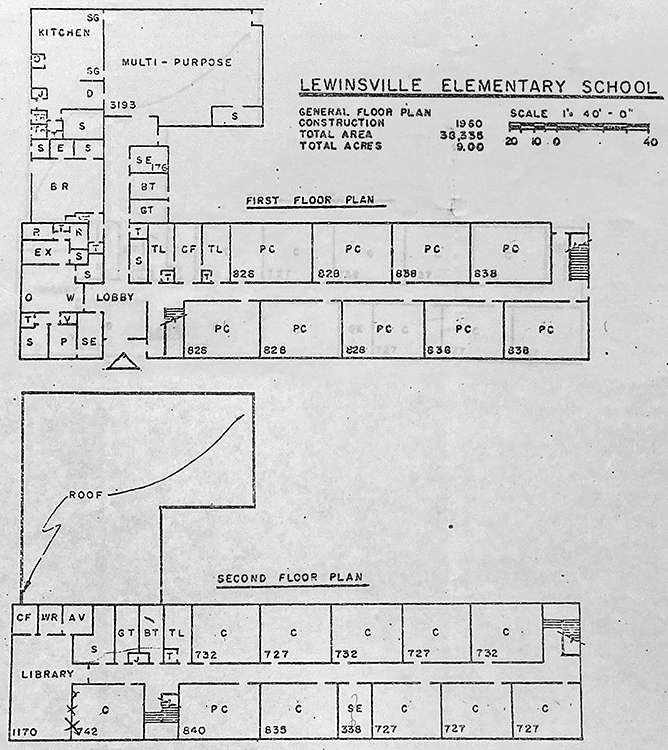School History: Lewinsville Elementary School
Remembering Our Past
Built at a cost of $433,750 by Burroughs & Preston, Inc., Lewinsville Elementary School opened its doors to students for the first time on September 5, 1961. The school’s first principal was Evelyn T. Magarity.
Prior to 1960, when Fairfax County Public Schools (FCPS) opened its first intermediate schools, elementary school education consisted of grades one through seven. In 1967, FCPS piloted a kindergarten program in seven schools, one of which was Lewinsville Elementary School. The program proved so successful that kindergarten was adopted county-wide the following school year. Approximately 8,100 children enrolled in kindergarten classes in the fall of 1968.
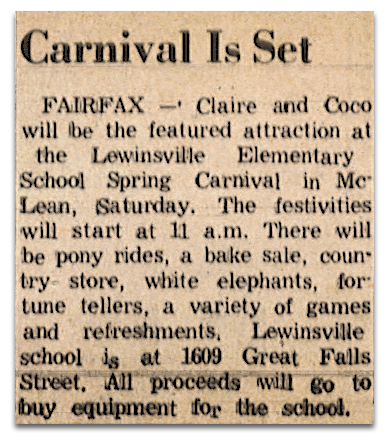
Modernizing Lewinsville
In the early 1970s, FCPS was in the midst of a programmatic shift at the elementary school-level. New schools were being constructed with open classrooms clustered around resource area “pods” that could be divided with movable partitions into separate learning areas. Newly constructed schools also had gymnasiums and specialized classrooms for art, music, science, and special education.
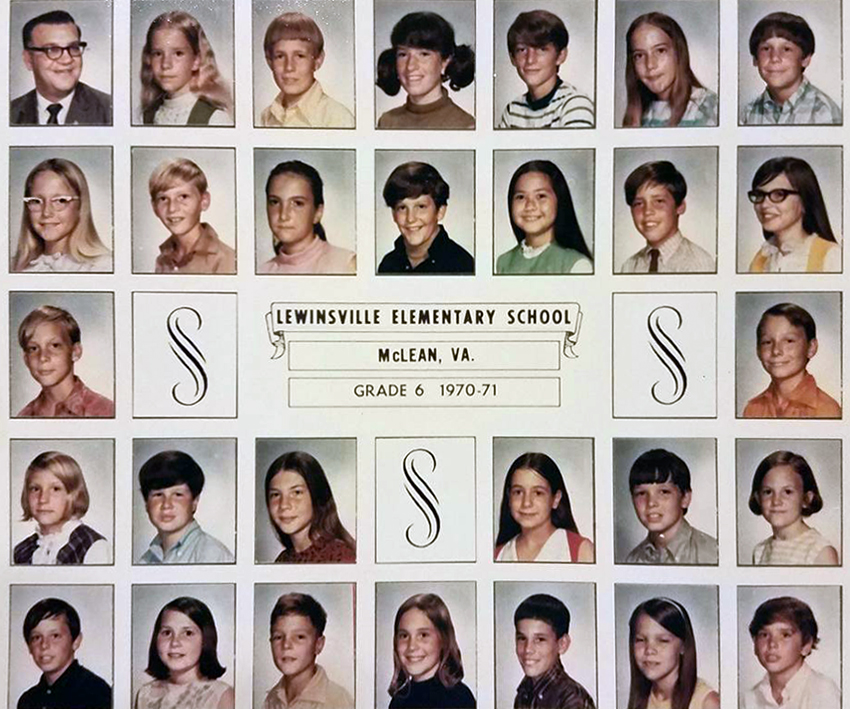
In the fall of 1971, the Lewinsville Elementary School PTA presented the School Board with a list of changes they wanted to see implemented at the school. Among the items listed were:
- The construction of a proper physical education facility.
- Classrooms for music, art, and science.
- An enlarged, air-conditioned library.
- Flexible space for large or small group activities.
The PTA recommended that the School Board place an emphasis on updating elementary schools in a forthcoming school bond issue. However, when the proposed bond issue to fund school construction was put before voters in a referendum in 1972, it failed. The school construction program was scaled back significantly, and the improvements to Lewinsville Elementary School never materialized.
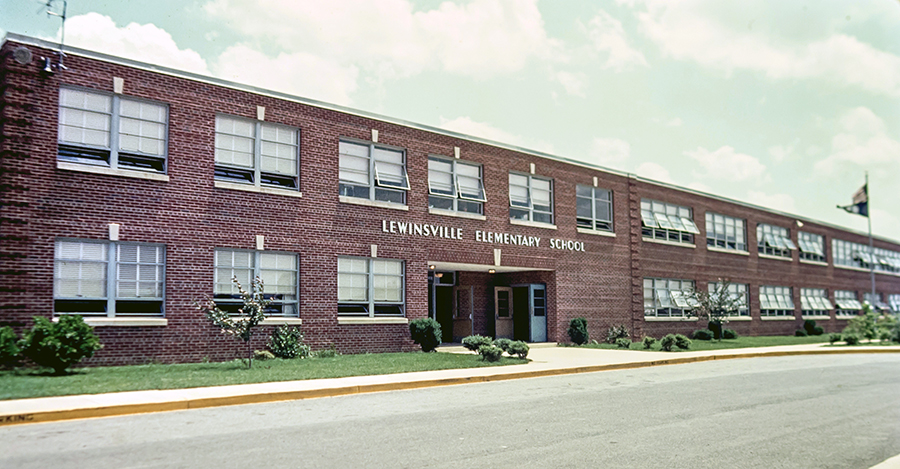
Memories of Lewinsville
I taught at Lewinsville for ten years starting in 1967. Chuck Koryda was the principal. He was the best. In those days many principals wouldn’t hire Jewish teachers. He hired many. The parents and teachers worked together as a team. We had parent volunteers every day helping all teachers. Before the [introduction of] standardized testing, we were able to instruct students below grade level, on grade level, and above grade level. All students were given work every day that they could do. Many faculty members came in extra early to socialize in the teachers’ room. ~ Lara Shainis, Teacher, Lewinsville Elementary School
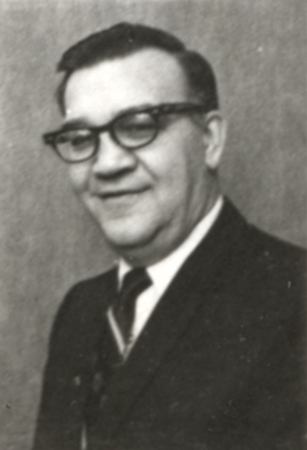
Lewinsville Closes
From the mid-1970s into the 1980s, elementary schools that had seen rapid enrollment growth during the post-World War II baby boom were suddenly faced with an abundance of empty classrooms. This led to the closure of 13 elementary schools between 1975 and 1982.
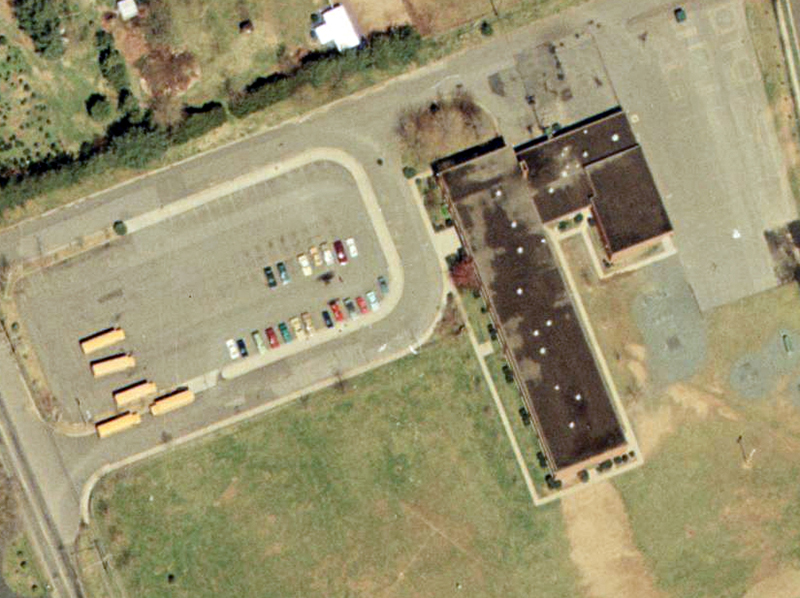
From 1979 to 1981, student enrollment at Lewinsville Elementary School plummeted from 414 to 340 students. Enrollment at nearby Kent Gardens Elementary School was also in steep decline. Parents realized that it was becoming increasingly likely that either Lewinsville or Kent Gardens might be closed soon, so the PTAs of both schools met and formulated a plan.
On November 19, 1981, the School Board received a proposal from the presidents of the Kent Gardens and Lewinsville PTAs to merge the two schools beginning in September 1982. Studies of the projected memberships and direct operating costs of the schools were undertaken. The projected memberships and room requirements, as well as instructional program alternatives, were presented in November and December 1981, to representatives of the Kent Gardens and Lewinsville communities and PTAs. A review of the data resulted in a recommendation by the representatives to consolidate the two schools effective at the start of the 1982-83 school year. The recommendation provides for the consolidation of the K-6 program, and for one section of School-Age Child Care to serve the combined communities. The possibility of also providing one section of English as a Second Language will be reviewed. ~ School Board Agenda Item IV-B, December 12, 1981
The School Board approved the community’s proposal, and Lewinsville Elementary School closed permanently in June 1982.
The merger with Lewinsville went very smoothly, thanks to the support of Doug Dalton, exiting principal. We held meetings so the parents could get to meet me, and we had assurances from FCPS Personnel Services that most, if not all, teachers would come with the students. The layout of the building was the same as Lewinsville, so we did not have a student tour, as I recall. The merger doubled the size of Kent Gardens. ~ Nat Emery, Principal of Kent Gardens Elementary School, 1979-84
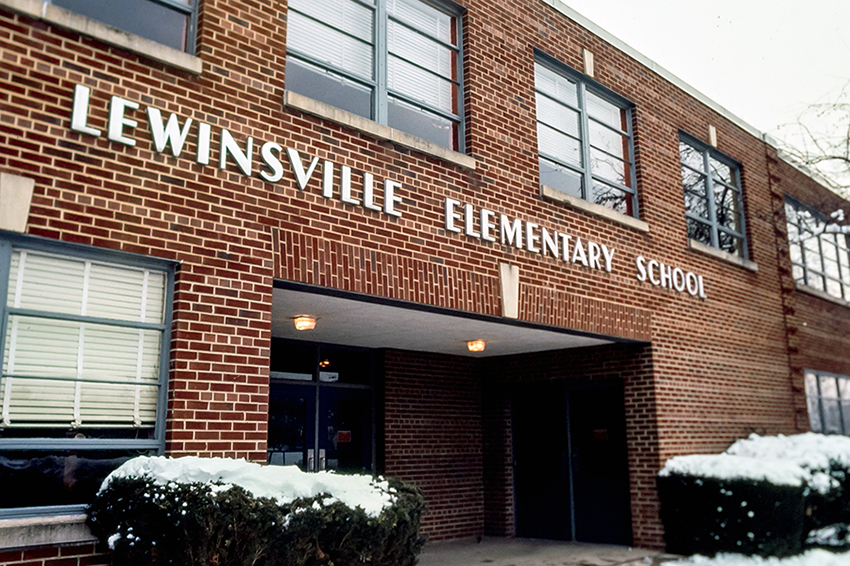
Senior Living
After it closed, Lewinsville Elementary School was declared surplus property and ownership of the building was transferred to the Fairfax County Board of Supervisors. In May 1983, the supervisors approved a plan to transform the former school into a senior living facility and daycare center. The classrooms on the building’s second floor were converted into efficiency apartments with wall-to-wall carpeting, kitchenettes, and bathrooms.
A group of Fairfax residents entered the former Lewinsville Elementary School in McLean – to live. The two-story brick building, where the county’s children learned reading, writing, and arithmetic for 22 years, is the first surplus school in the metropolitan area to be converted to apartments for the elderly. On the second floor, each classroom has been divided into two freshly carpeted efficiency apartments. The school’s library has been transformed into a dining room and a commercial kitchen, and a sitting room holds a television, couches, and easy chairs. The 16 women and four men living in the Lewinsville Center residences were chosen from a pool of more than 200 people who inquired about the center. ~ The Washington Post, February 7, 1985
In 2015, the former Lewinsville Elementary School was demolished, and a new senior living facility and daycare/preschool center were constructed on the site.
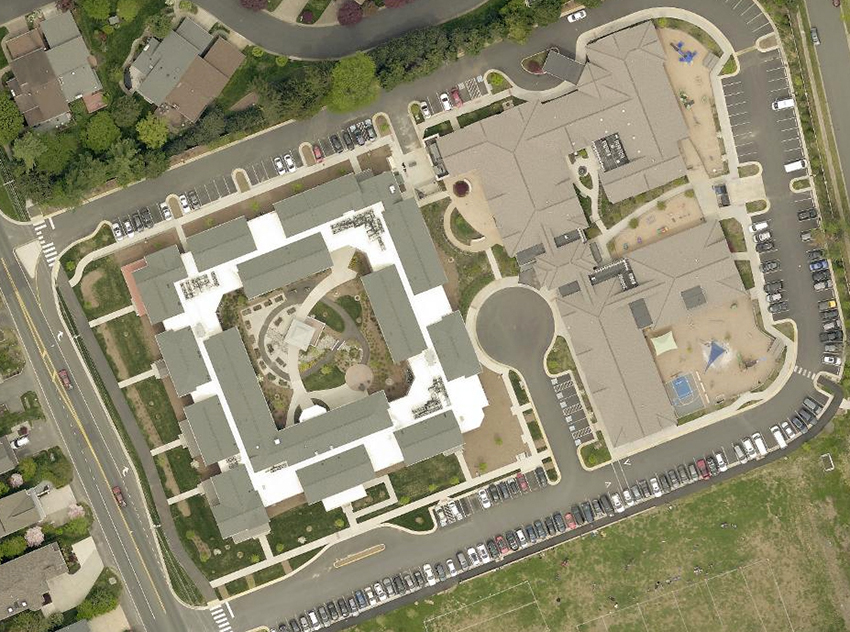
The Principals
Some of the principals of Lewinsville Elementary School were Evelyn T. Magarity (1961-1966), Charles L. Koryda (1966-77), Cyrus H. Doub (?-1980), and Douglas W. Dalton (1980-82).
